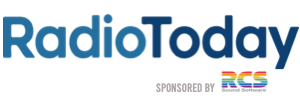So, you’re ready to dive into the thrilling world of podcasting. But before you hit record, it’s crucial to choose the right format. Your podcast format sets the tone for audience engagement and, ultimately, your podcast’s success.
Understand Your Goals
Before you embark on your podcasting journey, take a moment to define your goals. Are you aiming to educate, entertain, or weave compelling stories? Knowing your goals will guide you in selecting a format that aligns with your mission.
Know Your Audience
Understanding your audience is like having a secret weapon. Dive into researching their preferences, discover what makes them tick, and tailor your podcast format accordingly.
Explore Different Formats
Let’s open the treasure chest of podcasting formats, shall we? Here’s a peek into the podcasting world’s diverse landscape:
1. Solo Ventures
Here, you’re the star of the show. Whether it’s heartfelt monologues, engaging storytelling, or expert advice, the solo format offers a direct line from your voice to your audience’s ears. Pros? Total flexibility and a personal connection. Cons? The solo spotlight can be a demanding stage. Tip? Plan your scripts, and don’t rely on freestyling.
2. Panel Discussions
Multiple hosts bring diverse perspectives, creating lively debates. Pros? Shared responsibilities and the pull of banter. Cons? Coordinating schedules and editing can be a nuisance. Tip? Chemistry is the secret sauce, so make sure you’re gelling well with your co-hosts.
3. In-Depth Interviews
Deep-dive interviews with famous guests can offer unique insights and engaging stories. Pros? Consistent format with a touch of novelty in each episode. Cons? It may be challenging to schedule interesting guests at the beginning of your podcasting career. Tip? Do a lot of research into your guests and prepare the questions beforehand.
4. Narrative Storytelling
Whether true crime, fiction, or historical tales, narrative podcasts offer some of the most popular ones out there. Pros? Artful storytelling and highly binge-able content. Cons? Time-intensive production and a need for skilled editing. Tip? Plan meticulously, as your script is the star.
5. Mixed Format
A mixed format is perfect for appealing to a varied audience. Think of leading bingo sites that seamlessly blend different game formats for a diverse gaming experience. Pros? The blend of styles keeps the content fresh and engaging. Cons? Coordinating diverse segments can be challenging. Tip? Maintain a clear theme or focus to anchor your mixed-format podcast.
Consider Your Content
Your content is the heart of your podcast, and the format is the vessel that carries it. Certain formats naturally complement specific content types. Tailor your choice based on the nature of your content.
Technical Considerations
Address the equipment, recording environment, and editing needs that each format demands. Your audience should enjoy a high-quality audio experience, regardless of the format.
Evaluate Your Resources
Consider your resources – time, budget, and your podcasting team. For example, solo podcasts may be less expensive to produce than mixed format.
Seek Feedback
Encourage feedback early on, creating a valuable loop for continuous improvement. Listener insights can be the secret ingredient in fine-tuning your podcast.
Conclusion
Before you hit the record button, you should think through how you should format your podcast narrative. We hope we’ve helped you with some tips on how to pick out the right one for you. After all, your voice is waiting to be heard!

